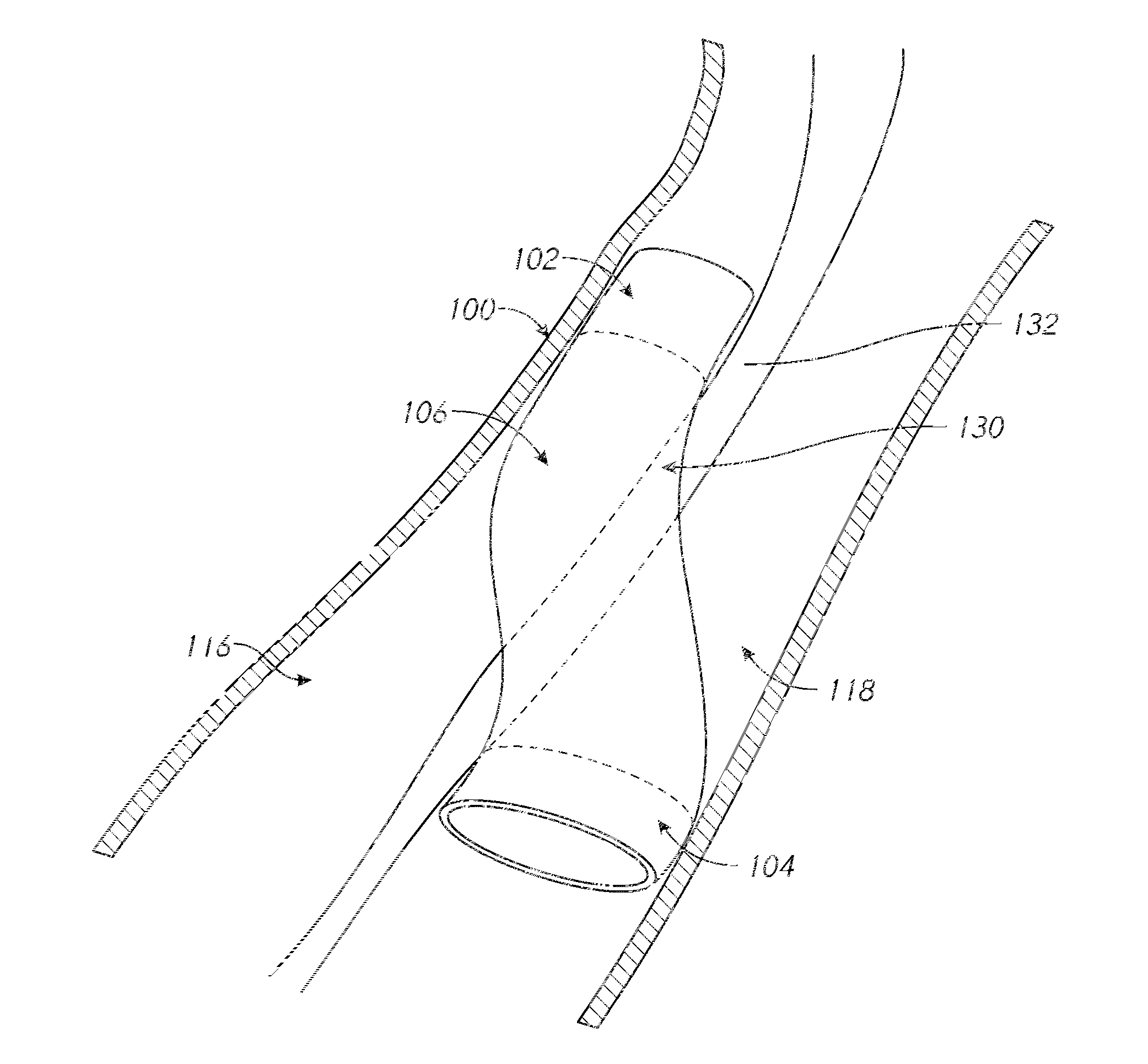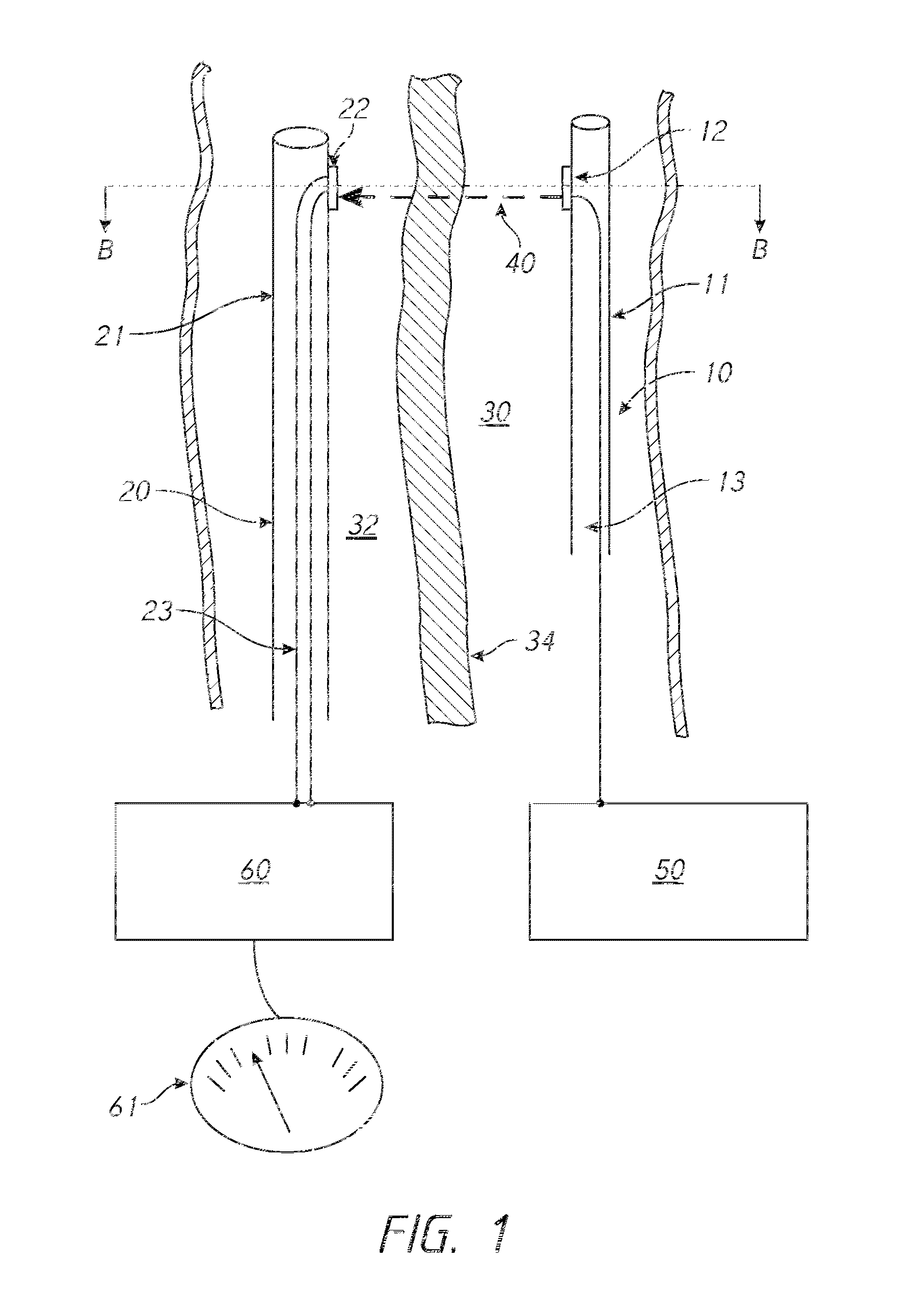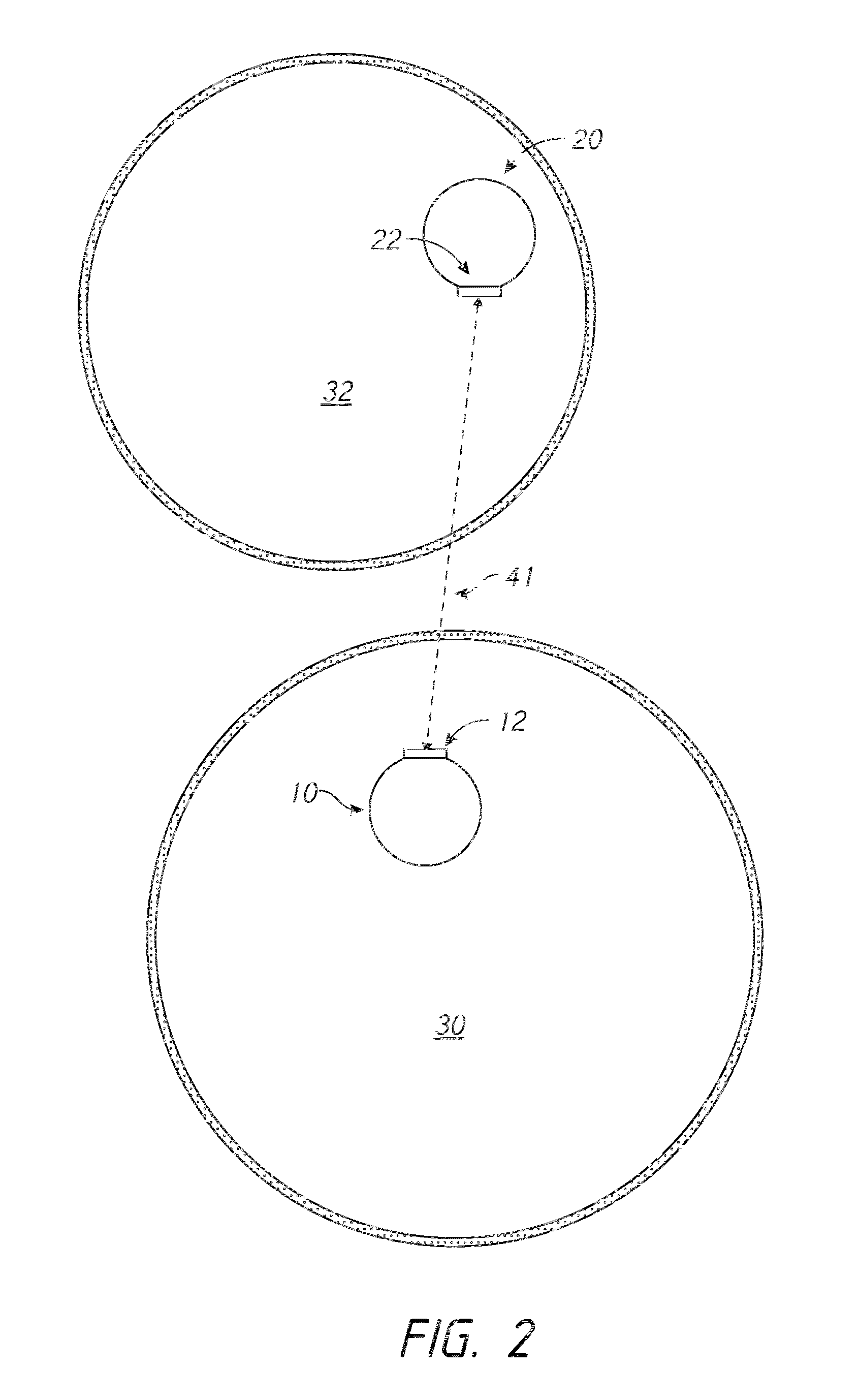Methods for targeting body passages
a body passage and target technology, applied in the direction of prosthesis, catheters, blood vessels, etc., can solve the problems of significant surgical trauma, conventional coronary bypass surgery is not always an option, balloon angioplasty is not always a suitable measure, etc., to improve the targeting and localization of therapy administration.
- Summary
- Abstract
- Description
- Claims
- Application Information
AI Technical Summary
Benefits of technology
Problems solved by technology
Method used
Image
Examples
example
[0118
[0119]The methods and systems described herein demonstrate particular utility in cardiovascular surgery according to several embodiments. Certain aspects are further illustrated by the following non-limiting example, in which the system is used by a clinician to perform the procedure of arterial-venous connection (PICVA) so as to enable retroperfusion of cardiac tissue following occlusion of a coronary artery.
[0120]The launching catheter 10 is inserted into the occluded coronary artery by standard keyhole surgical techniques (e.g., tracking over a guidewire, tracking through a guide catheter). The target catheter 20 is inserted into the coronary vein that runs parallel to the coronary artery by standard keyhole surgical techniques (e.g., tracking over a guidewire, tracking through a guide catheter). The coronary vein is not occluded and, therefore, provides an alternative channel for blood flow to the cardiac muscle, effectively allowing the occlusion in the coronary artery to ...
PUM
 Login to View More
Login to View More Abstract
Description
Claims
Application Information
 Login to View More
Login to View More - R&D
- Intellectual Property
- Life Sciences
- Materials
- Tech Scout
- Unparalleled Data Quality
- Higher Quality Content
- 60% Fewer Hallucinations
Browse by: Latest US Patents, China's latest patents, Technical Efficacy Thesaurus, Application Domain, Technology Topic, Popular Technical Reports.
© 2025 PatSnap. All rights reserved.Legal|Privacy policy|Modern Slavery Act Transparency Statement|Sitemap|About US| Contact US: help@patsnap.com



